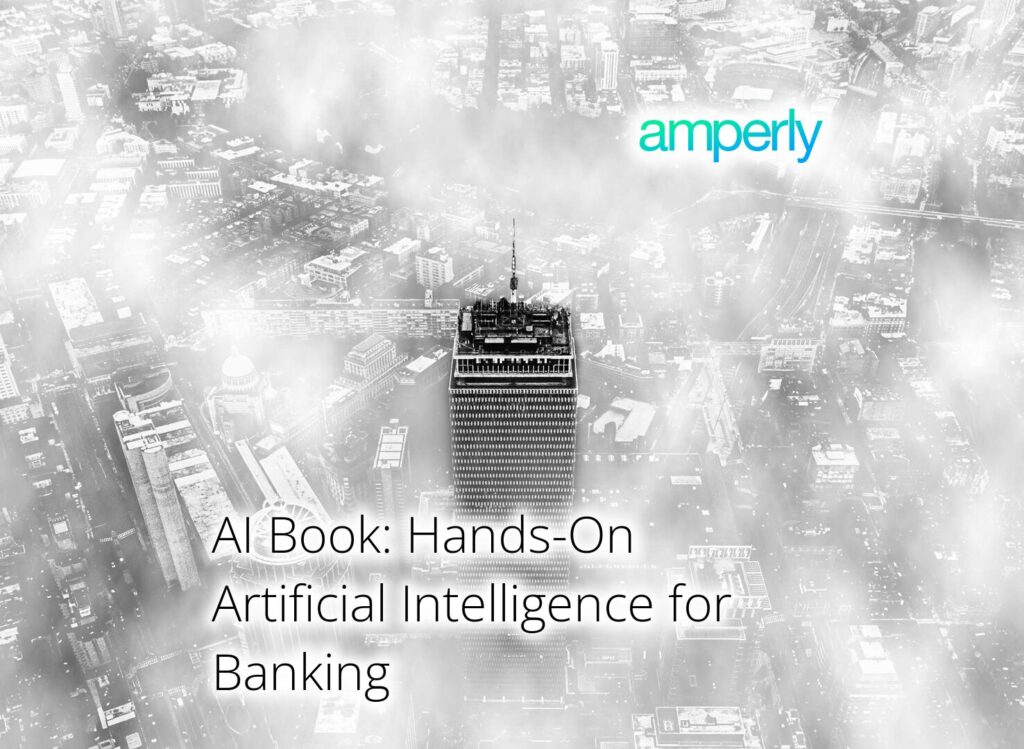AI for banking and finance is redefining how you work by making processes faster, smarter, and safer. From detecting fraud in seconds to automating repetitive tasks, AI is turning what was once complex into something manageable. Let’s dive into practical ways you can use AI today to solve your biggest day-to-day problems.

You can learn more about the applications of AI in detecting fraud here artificial intelligence in fraud detection. You can dive deeper into how AI algorithms enhance fraud detection in banking by checking out this article on AI in fraud detection.
AI-Driven Fraud Detection and Prevention in Banking
Real-Time Fraud Detection and Prevention: AI for banking and finance helps banks analyze vast transaction data instantly, reducing fraud risks significantly. Dansk Bank’s AI system improved fraud detection by 50% and cut false positives by 60%, proving its impact. With real-time monitoring, you can protect your institution from breaches while also providing secure services for customers.
Enhanced Customer Support with AI Chatbots: Integrating AI for banking and finance into apps improves customer service 24/7 without extra staff. Bank of America’s Erica chatbot managed over 50 million client requests, showing how scalable and effective AI in banking examples can be. Invest in chatbot solutions to reduce workload, handle queries efficiently, and increase client satisfaction levels.
Generative AI for Personalized Banking Experiences
Fraud Detection and Prevention: AI for banking and finance is a true game-changer when it comes to fraud detection. With financial crimes accounting for 29% of all cyberattacks in 2019, banks now rely on AI to monitor transactions in real-time and detect unusual patterns before they escalate into fraud. Danske Bank, for instance, boosted their fraud detection by 50% and reduced false positives by 60%, setting a benchmark for how AI improves the sector. If you’re in banking, think about how much your current fraud detection could improve with this kind of system.
Personalized Banking Services: AI for banking and finance allows you to offer tailored experiences your customers expect. Tools like Bank of America’s chatbot “Erica” handled 50 million customer queries in one year, proving that AI in banking examples like this are scalable and impactful. These systems don’t just streamline service; they deeply engage customers by predicting needs and personalizing products in ways manual processes can’t match. Start asking yourself how you could adopt AI tools like chatbots to drive customer satisfaction and save resources.
AI-Powered Loan and Credit Decision Automation
AI-Powered Loan Decisions Improve Efficiency: AI for banking and finance enhances loan and credit decisions by analyzing behavioral patterns and large datasets to predict creditworthiness. According to Business Insider, 80% of banks now recognize the potential benefits of AI in banking, driving its adoption. Faster processing and fewer errors mean you can offer better services to customers, giving your bank a sharper competitive edge.
Fraud Detection with Enhanced Accuracy: AI for banking and finance detects fraudulent activities by analyzing transaction patterns in real-time to flag unusual behaviors. Danske Bank saw a 50% improvement in fraud detection capabilities by leveraging AI tools, significantly lowering false positives. These systems protect customer data and help streamline back-office operations, ensuring safer and more efficient banking.
Predictive Analytics for Market Trends in Financial Services
Fraud Detection and Prevention: AI for banking and finance strengthens fraud detection systems by analyzing vast transaction data in real time to pinpoint anomalies. For example, a deep learning tool used at Danske Bank increased fraud detection by 50% and reduced false positives by 60%. Your fraud teams will save time while improving accuracy, allowing faster responses to fraudulent activities.
Enhanced Customer Service with AI Chatbots: AI-powered chatbots improve efficiency and customer satisfaction by offering 24/7 assistance for a wide range of banking services. Bank of America’s chatbot, Erica, managed over 50 million client requests in 2019, showcasing how AI in banking examples provide personalized support at scale. When implemented effectively, these tools can reduce email workloads, provide quick resolutions, and boost customer retention rates by simplifying everyday tasks.
AI-Enhanced Cybersecurity Measures in Financial Institutions
AI-enhanced cybersecurity addresses rising electronic banking threats: With online transactions increasing, banks face complex cyber risks daily. AI for banking and finance plays a critical role here, as one study highlights that the financial sector experienced 29% of all cyberattacks, the most of any industry. By deploying continuous monitoring systems, you can catch threats early and implement preventive measures before they escalate into costly breaches.
Improved fraud detection through data analysis: AI in banking examples, like Danske Bank, show how fraud detection algorithms can boost success by 50% while cutting false positives by 60%. These tools analyze massive amounts of customer data in seconds, flagging suspicious behaviors that human teams might overlook. Using AI for banking and finance strengthens your fraud defenses while optimizing the work of human analysts for nuanced reviews.
Operational Efficiency through Robotic Process Automation (RPA) in Banking
Operational Efficiency with Robotic Process Automation (RPA) Using AI for Banking and Finance: Streamlining repetitive tasks such as data entry and regulatory compliance is a game-changer for daily operations. JPMorgan’s CoiN platform exemplifies this by analyzing thousands of contracts in seconds, demonstrating how AI in banking examples can drastically cut processing time and costs. By reducing human error and freeing up your time for complex tasks, RPA ensures your workday is more productive and less stressful.
Fraud Detection with Enhanced Accuracy Using AI for Banking and Finance: Security is a top concern, but with AI, fraud detection becomes faster and smarter. For example, Danske Bank’s AI fraud detection system improved accuracy by 50% and cut false positives by 60%, proving the tangible impact of AI in the banking sector on both security and efficiency. By automating threat detection and reducing manual oversight, you can focus on creating a safer environment for customer transactions.
AI for Regulatory Compliance and Risk Management in Banking
AI for Fraud Detection in Banking and Finance: AI for banking and finance plays a critical role in identifying unusual patterns in transaction data that could signal fraudulent activity. For example, Danske Bank used an AI fraud-detection algorithm that improved fraud detection by 50% and cut false positives by 60%. By adopting AI, you can strengthen your bank’s security measures and minimize fraud without overburdening human analysts.
AI for Customer Support in Banking and Finance: When banks integrate AI-powered chatbots into their customer services, they enable 24/7 assistance. For instance, Erica, Bank of America’s virtual assistant, handled 50 million client requests in 2019, showcasing the practical impact of AI for banking and finance on enhancing operational efficiency. Start leveraging chatbots to reduce workload while providing personalized and instant customer support.
Challenges of Embedding AI in Banking and Finance
AI-Powered Fraud Detection in Banking and Finance: Cybersecurity is critical for your bank, and leveraging AI for banking and finance can significantly enhance fraud detection techniques. In 2019, banks accounted for 29% of all cyberattacks, highlighting the need for advanced fraud prevention tools. By analyzing transaction patterns in real-time, AI can detect anomalies and significantly minimize false positives, ensuring both efficiency and security in your operations. If your institution hasn’t integrated AI fraud detection, it’s time to evaluate the current gaps you’re facing in fraud prevention.
Enhancing Customer Experience with Chatbots: You know how demanding customers can be about 24/7 service access, which is where AI for banking and finance steps in. Bank of America’s Erica, one of the best AI in banking examples, efficiently managed over 50 million client requests in 2019, showcasing the immense potential of AI-based chatbots. These tools don’t just answer questions—they automate complex queries, personalize interactions, and reduce the load on your team’s other service channels. Think about areas in your customer service processes where an AI chatbot could provide faster resolutions.
Generative AI for Document Processing Automation in Banking
Generative AI for Document Processing Automation in Banking: Generative AI is transforming document workflows in your bank, automating processes like loan applications and compliance reviews. Research from McKinsey shows this AI advancement in banking could unlock up to $1 trillion in value across the industry. By reducing manual errors and drastically cutting processing times, this technology ensures your workload becomes lighter while maintaining accuracy and compliance.
Fraud Detection with AI for Banking and Finance: Fraud prevention gets a tech-driven upgrade with AI spotting fraudulent activity in seconds, as seen with Danske Bank’s 50% increase in fraud detection accuracy. In 2019 alone, the financial sector accounted for 29% of all cyberattacks, proving the importance of proactive fraud management. By integrating AI for banking and finance into your systems, you can protect customer accounts while reducing the burden of false positives, saving valuable time.
The Growing Impact of AI on Future Banking Models
Enhanced Fraud Detection with AI for Banking and Finance: Banks are increasingly relying on AI tools to protect their operations and customers from fraud. For instance, AI-driven systems like the one used by Danske Bank improved fraud detection by 50% while cutting false positives by 60%. As a bank employee, integrating AI for fraud detection allows you to minimize operational risks while keeping customer trust intact—elements critical to reducing financial loss.
Streamlining Loan Decisions with AI for Banking and Finance: AI systems are transforming the process of assessing creditworthiness by analyzing behavioral data and identifying risk patterns. As an example, AI models can tap into alternative data sources beyond traditional credit scores to offer lending opportunities to underbanked populations, an approach that has unlocked nearly $1 trillion in revenue potential as McKinsey data highlights. Using AI tools in credit processes means faster approvals, personalized rates, and a seamless experience, all of which help strengthen relationships with customers.
Artificial Intelligence Services
AI Services Driving Impact in Banking and Finance
Artificial intelligence is reshaping banking, offering more efficiency and accuracy in operations. Whether it’s improving fraud detection, enhancing customer experiences, or automating decision-making, AI keeps transforming how banks function.
AI-Driven Fraud Detection and Prevention
Fraud is a constant worry in banking, and AI solves this with precision. AI systems analyze transaction data in real time to identify unusual patterns, helping banks stop fraud before it damages their reputation. Some banks have seen up to a 50% improvement in fraud detection with AI. If you’re looking to see how businesses are already benefiting from AI, check out these AI case studies and client feedback.
Generative AI for Personalized Banking
Generative AI builds strong customer relationships by offering more personalized marketing and services. AI chatbots handle customer questions efficiently, while recommendation engines improve satisfaction. Tools like these ensure banks stay relevant in an online-first world. Learn more about how to create meaningful connections with AI social media posts and product descriptions.
AI-Powered Loan and Credit Decision Automation
AI drastically reduces manual processes in loan approvals, making decisions faster and more reliable. It considers behavioral insights and credit history to predict default risks more accurately. This builds trust while expanding credit access to underserved groups. Discover how AI helps streamline customer communication with AI email replies and lead nurturing flows.
AI is transforming banking across departments. Check out our AI Services to see how it can benefit your team. You can check out more on the integration of AI in detecting fraud in financial transactions here artificial intelligence in fraud detection.
Unlock the Power of AI in Banking: Start Here!
1. Start by evaluating areas in your work where AI could have an immediate impact—fraud detection, customer support, or loan processing. Identify processes that are repetitive or prone to errors, and consider how AI tools might streamline them. This will help you build a solid case for adopting AI for banking and finance within your organization.
2. Discuss your AI strategy with your team or leadership. Share success stories like Danske Bank’s 50% fraud detection boost or Bank of America’s Erica chatbot managing 50 million requests. These examples prove the ROI potential of AI solutions and can help align your team’s goals with industry-leading trends.
Need help figuring out where to start? Contact us to explore tailored AI solutions that match your institution’s needs.

